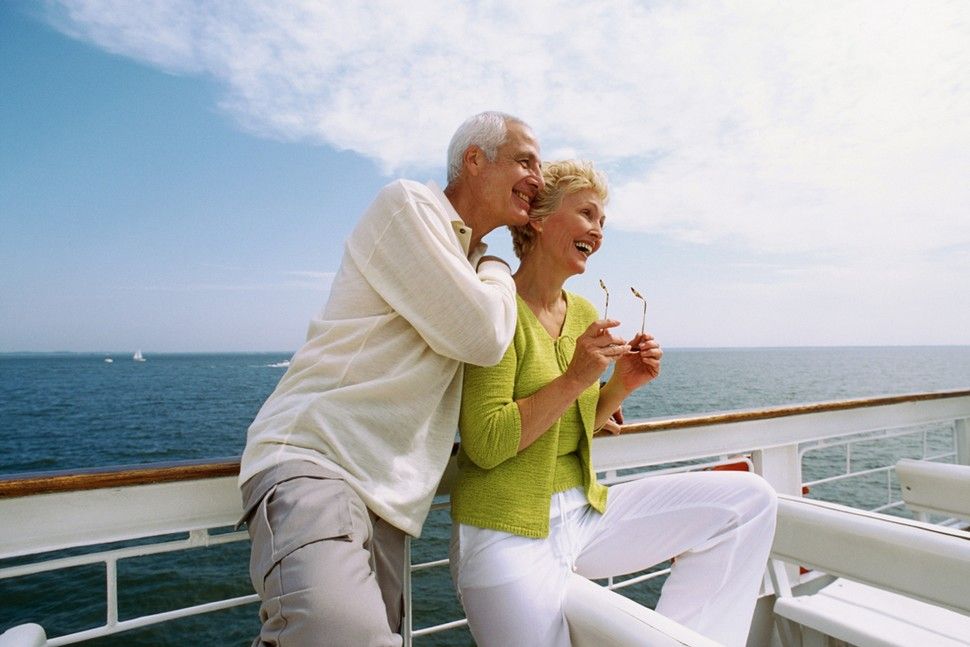Senior Tours Cruises offer a unique blend of relaxation, exploration, and camaraderie. These specialized voyages cater to the specific needs and preferences of older travelers, ensuring a comfortable and enriching experience. From accessible cabin options and tailored shore excursions to onboard amenities designed for comfort and convenience, senior-focused cruises provide a worry-free escape. This exploration delves into the nuances of planning and marketing these unique travel experiences.
We’ll examine the demographics of senior travelers, their health concerns, and preferred travel styles. We will also analyze the key features of senior-friendly cruises, including accessible cabins, shore excursions designed for varying mobility levels, and specialized onboard medical services. Furthermore, we’ll discuss pricing strategies, marketing approaches, and potential challenges in catering to this specific demographic, offering solutions for a seamless and enjoyable travel experience.
Understanding the Senior Traveler
Senior travelers represent a significant and growing market segment within the cruise industry. Understanding their specific needs and preferences is crucial for creating successful and fulfilling cruise experiences. This involves considering their demographics, health concerns, fitness levels, and overall travel expectations.
Senior Traveler Demographics and Travel Preferences
The typical senior cruise passenger is often aged 65 and above, though this age range is expanding. Many are retired couples or groups of friends, possessing a disposable income and the time to embark on leisure travel. They often prioritize comfort, convenience, and enriching experiences. Popular destinations include warm-weather locales, historical sites, and culturally rich areas. Cruises offer an all-inclusive package that eliminates much of the stress associated with independent travel planning, appealing greatly to this demographic. Many senior travelers also value onboard activities and amenities that cater to their interests, such as lectures, cultural performances, and social events.
Health Concerns and Accessibility Needs
Health and accessibility are paramount considerations when planning for senior travelers. Common health concerns include mobility limitations, cardiovascular issues, and pre-existing conditions such as arthritis or diabetes. Cruises should offer accessible cabins, ramps, elevators, and other facilities to accommodate passengers with disabilities. Clear communication regarding medical facilities onboard and emergency procedures is also essential. Provisions for dietary restrictions and medication management should be readily available and clearly communicated.
Considering Various Fitness Levels
Senior travelers exhibit a wide range of fitness levels. Some may be highly active, while others may have mobility limitations. Cruise itineraries and onboard activities must cater to this diversity. This includes offering a range of physical activities, from gentle yoga classes to more strenuous excursions, along with options for relaxation and rest. Providing clear descriptions of activity levels and difficulty is vital for passengers to choose suitable options. Overly strenuous excursions should always be clearly identified as such.
Marketing Materials Tailored to Senior Travelers
Marketing materials should highlight the aspects of the cruise that are most appealing to seniors. This includes emphasizing the ease and convenience of all-inclusive packages, the comfort and luxury of the accommodations, and the enriching cultural and social experiences offered. Visuals should showcase accessible features and onboard amenities appealing to this demographic, such as comfortable seating areas, quiet lounges, and accessible excursions. Marketing copy should use clear and concise language, avoiding jargon and emphasizing relaxation and ease. Testimonials from previous senior travelers can also add significant credibility.
Comparison of Cruise Lines Catering to Seniors
| Cruise Line | Unique Features | Accessibility Features | Onboard Activities |
|---|---|---|---|
| Oceania Cruises | Focus on upscale, sophisticated experiences; curated shore excursions. | Accessible cabins, elevators, ramps. | Lectures, cooking demonstrations, enrichment programs. |
| Viking Ocean Cruises | Emphasis on cultural immersion and enrichment; smaller ship experience. | Accessible cabins, assistance for embarking/disembarking. | Port talks, destination-focused activities. |
| Regent Seven Seas Cruises | All-inclusive luxury; extensive shore excursions included. | Accessible cabins, dedicated staff assistance. | Variety of shows, enrichment programs, and onboard activities. |
| Princess Cruises | Wide range of itineraries and ship sizes; caters to a broad range of ages. | Accessible cabins, elevators, ramps; varying levels of assistance available. | Movies under the stars, themed parties, and various enrichment programs. |
Potential Challenges and Solutions
Catering to the unique needs of senior travelers on cruises requires proactive planning and a comprehensive understanding of potential challenges. Successfully addressing these challenges translates to a safer, more enjoyable, and ultimately, more rewarding experience for all involved. This section outlines potential difficulties and offers practical solutions to ensure a smooth and positive cruise for senior passengers.
Health Concerns During the Cruise
Maintaining the well-being of senior passengers is paramount. Pre-existing health conditions, such as heart disease, diabetes, or mobility issues, require careful consideration. Solutions include providing readily available medical facilities onboard with qualified personnel, offering easily accessible dietary options to accommodate various dietary restrictions and needs, and promoting a healthy lifestyle through onboard activities like gentle exercise classes and health workshops. Furthermore, clear and concise communication regarding onboard medical services and emergency procedures should be readily available in multiple formats (e.g., large print brochures, audio announcements). For example, a dedicated medical team trained in geriatric care can significantly reduce response times in medical emergencies. A well-stocked onboard pharmacy, capable of dispensing common medications, further enhances preparedness.
Safety Concerns Onboard and During Shore Excursions
Safety is a primary concern for senior travelers. Falls, particularly on uneven surfaces, are a common risk. Solutions involve implementing measures like installing handrails in strategic locations throughout the ship, providing non-slip surfaces in high-traffic areas, and ensuring adequate lighting in corridors and stairwells. During shore excursions, careful planning is crucial. Excursions should be appropriately paced, avoiding strenuous activities, and offering options for those with limited mobility. Detailed descriptions of excursion itineraries, including potential physical challenges, should be provided beforehand. For example, a shore excursion to a historical site could offer options: a guided walking tour for those with good mobility, and a shorter, less strenuous tour using a shuttle bus for those with mobility limitations.
Communication and Assistance for Seniors with Disabilities
Effective communication and assistance are essential for senior passengers with disabilities. This involves providing clear and accessible information in multiple formats (e.g., Braille, large print, audio). Well-trained staff should be readily available to assist with tasks such as boarding, disembarking, and navigating the ship. Assistive devices, such as wheelchairs and hearing aids, should be easily accessible and well-maintained. For example, a dedicated team of staff trained in assisting passengers with various disabilities, including visual and hearing impairments, can ensure a more inclusive and comfortable experience. Signage throughout the ship should be clear, concise, and easy to understand, using visual cues in addition to text.
Emergency Procedures for Senior Passengers
A detailed emergency plan specifically addressing the needs of senior passengers is crucial. This plan should outline procedures for evacuation, medical emergencies, and other unforeseen events. Designated assembly points for seniors with mobility limitations should be clearly marked and easily accessible. Trained personnel should be readily available to assist seniors during emergencies. Regular emergency drills, tailored to the needs of senior passengers, should be conducted to ensure familiarity with procedures. For instance, a dedicated communication system using text messages or visual alerts, along with pre-assigned buddy systems for seniors with mobility issues, can greatly enhance safety during emergencies. The plan should also incorporate procedures for contacting emergency services both onboard and ashore.
Final Review
Ultimately, the success of senior tours and cruises hinges on a thoughtful understanding of the target audience and a commitment to providing exceptional service. By carefully considering the unique needs and preferences of senior travelers, cruise lines can create memorable and fulfilling experiences that encourage exploration and relaxation. The future of this niche market lies in continued innovation and a dedication to enhancing accessibility, comfort, and overall well-being for all passengers.




